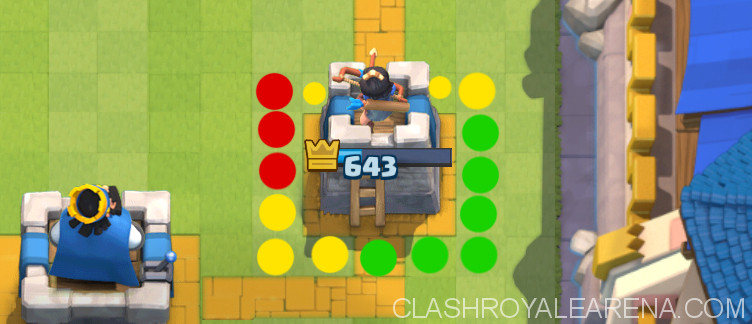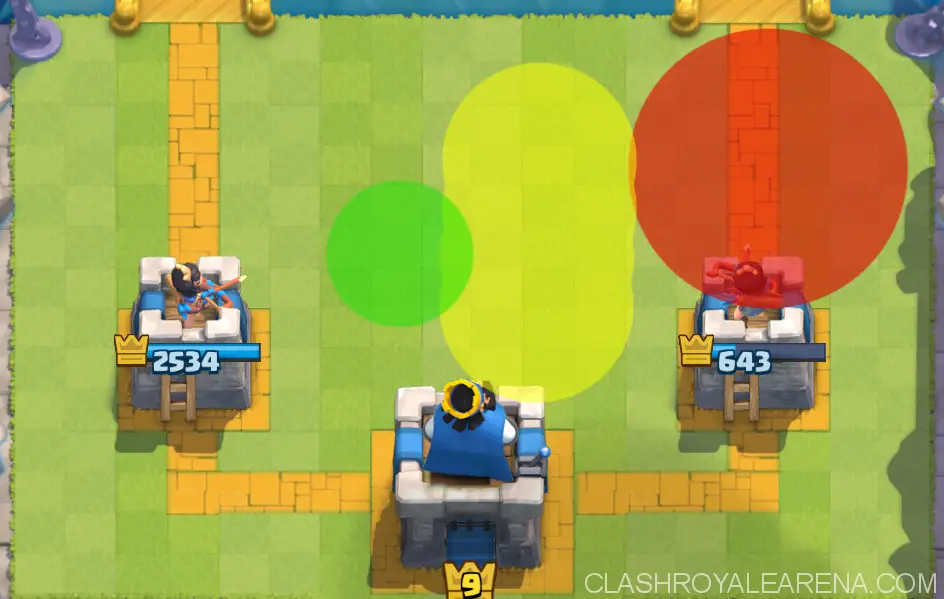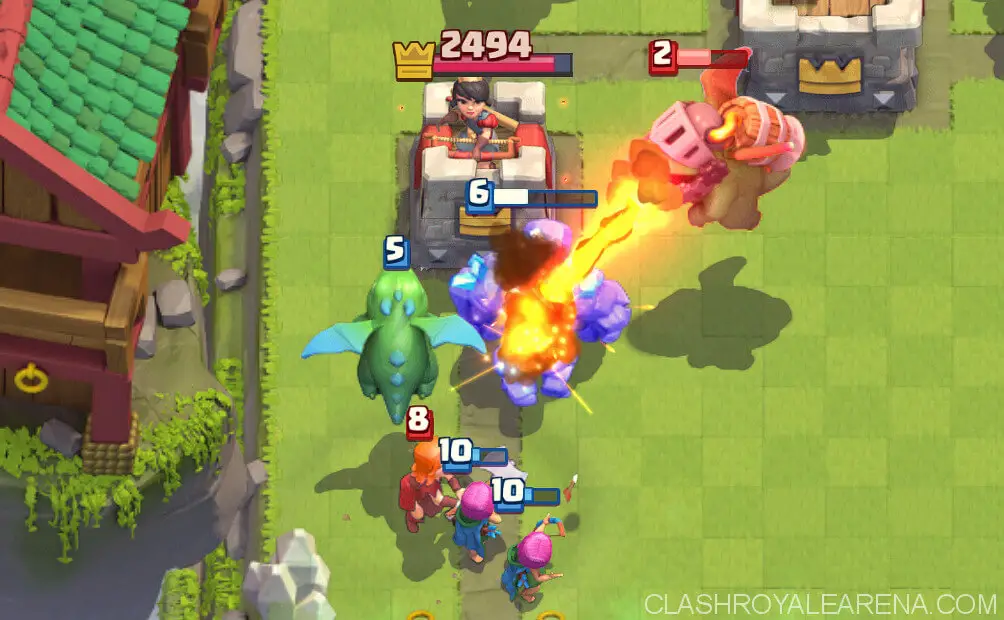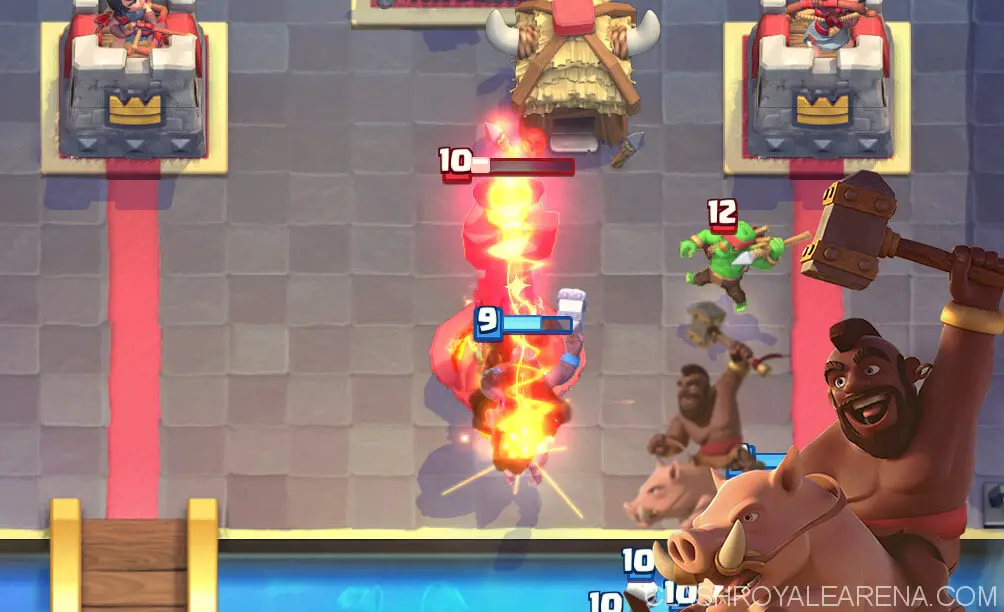Hey, Nitrome95 back for another guide and as a slight disclaimer, no, this is not about reading words on your opponent; it’s about predicting your opponent’s next move. Often times in lower arenas (I see this in every area though) where the two opponents just defend each other pushes the same way and attack the same way unsuccessfully.
The result is an extremely boring match that ends with either direct damage or a draw. What you need to do is to predict your opponent’s next move. This technique, if used correctly, will allow you to boost your trophies tremendously. With not predicting to predicting my opponent to attempting to predict my opponent, I would go from the 3100-3300 range to the 3600-3800 range. Reading your opponent truly separates good players from great players. These tips will also come with examples so that you can get a feel for how to apply these in game.

Basic and Advanced Tips on Reading your Opponent’s Moves
How to Begin to Predict
Before we get to how to read your opponent, I will share a tip that you must follow or else everything you will have to have a clear mind. This means that you should not be raged at someone beating you and you must have a quiet place. Reading your opponent takes thinking during the heat of a battle, so any distractions will prevent this from happening.
1. Knowing Your Opponent’s Cards
At the beginning of the game, you enter into a blind battle with an opponent that you have no idea. Which style of deck or their skill level is unknown to you. That is why to predict your opponent’s next move, you need to know what card they will probably play in that move.<
There are two things that you can do to know your opponent’s cards:
- Keep a mental note of what cards your opponent plays (or a physical note). Begin to take a note also of the role of each of your opponent’s cards.
- You can make earlier predictions if you can keep up with the metagame (the decks that are most commonly used in your current trophy level.
Let me expand on the second bullet point. Since I’m not very aware of the meta for anything lower than Arena 8, I will give an example for someone playing in Frozen Peak. Let’s say your opponent drops an aggressive Ice Golem Hog Rider combo. You counter with Cannon and Fire Spirits. Instantly, you could draw the conclusion from the popular decks currently, that the opponent’s deck will probably go somewhat like this:
- Hog Rider
- Ice Golem
- Tombstone
- Fireball
- Zap or Log
- Archers
- Mega Minion
- Ice Spirit
With knowing this, I can use my knowledge from others who have played this deck to take down the opponent. Another thing to note is that the two cards you revealed, fire spirits and cannon, can fit into so many deck styles that your opponent will still not know what deck you are running. Of course, every player is different, but knowing so much from maybe the first 10 seconds is already a leg up on your opponent.
Another type of card prediction comes with card rotations. If you didn’t already know what card rotation or cycle is, it is the random order in which your cards will be available to be placed again. In other words, if your opponent places down Barbarians, he or she will have to place down 4 more cards to be able to place down Barbarians again.
Let’s apply this to a practical situation.
For example, you are playing a spell bait deck, where your goal is to use troops vulnerable to spells (Skeleton Army, Minion Horde, Goblin Barrel) when your opponent doesn’t have any spells. You send out a Goblin Barrel, and assuming that you already know what your opponent is playing, they use their only spell, Zap. You immediately punish them with a Minion Horde Miner combo, and you know that since the Witch is their only answer to air splash, your get your Zap ready to stun the Witch long enough to allow the Minions to shred through her. They have no other answer to your push, giving you an easy tower for only 10 elixir (13 if you count the Goblin Barrel). They spend 7 Elixir, so you trade 5 Elixir for a tower; Not bad!
Here’s another situation using the same concept in a different way.
You know that your opponent shuts down your Hog Rider Ice Golem push with the Cannon and Ice Wizard, so since you see your opponent play those two cards in the same exact place every time, you can predict your enemy. The next time you send in you Hog Ice Golem, get your Fireball ready where it will hit the Ice Wizard and the Inferno Tower. Time it so that it will land when your opponent places down their cards, they will be instantly be obliterated, giving you 1500 tower damage.

2. Knowing Your Opponent’s Elixir
You might be wondering, “Almighty Nitrome, can u somehow see your opponent’s Elixir bar?” And no I can’t, but all good players have a good feel for what your opponent’s Elixir is (which is why you need a clear mind to focus). You don’t know exactly how much elixir they have, but you want to know if you have more or less elixir than your opponent, and how large is the Elixir gap.
For instance, a popular aggressive attack in arena 5 (when I was there) was to plant a Wizard with Barbarians. This is a horrible mistake as you can shut down the push with a single push. The enemy’s attack cost 9 elixir, while your defense cost 4. So by the time you defend, you will have about 7 elixir and your opponent will have about 2. With that 7 elixir, you can send in a Hog Rider Goblin push. Since your opponent’s only counter to your Hog Rider was Barbarians, they will be forced to place down their other counter, Goblins. You knew that, so you hovered your Zap over the tower to surprise your opponent with quickly dead Goblins.
Of course it is impossible to keep track of it at all times, but here’s a general rule of thumb: Push your opponent if they are low on Elixir. Use your prediction techniques to predict their counters based on the amount of elixir they have.
3. Predicting While on Defense
So far, I have written only about reading your opponent while on the offense. Now, I will cover two types of defensive predicting:
- What your opponent will play
- Card Placement
This seems a bit familiar to the offense, but it is applied differently in defense.
The first type of prediction is the easier of the two. What you will want to do is identify the type of push your opponent wants to create, and keep cards in your hand to counter it. For example, you will want to keep a fireball in your hand if your opponent plays three musketeers.
The second type of defensive prediction is a bit more complicated.

The green shows the optimal places where your opponent should plant their Miner, the yellow is a place where the opponent might play as a mix up. The red is where your opponent will almost never.
This means several things:
- Your opponent’s first Miner placement will be in one of the green spots.
- If they are smart (depending on your trophy level), they will switch between the optimal spots, then go for a mix up spot once you think you know the know your pattern.
So when trying to predict your opponent’s Miner placement, keep in mind these two rules. Believe me, you will get more correct Miner guesses. (Note: The bottom right corner of the tower is the safest place to put a ranged unit to target the Miner unless they place their miner there.)
Cannon/Inferno Placement Against Hog Rider
These two are the most popular reactive defenses (tombstone is not reactive). When playing these defenses, there are two things to keep in mind when selecting placement.
- Do you have a good amount of time to react?
- Did they pig push? (push the hog to the wall to bypass buildings in the optimal spot)
- Do you have to mix up your placement?
- Do you have troops to counter their support troops?
If you answered “yes” to 2 or 3, or “no” to 1 or 4, then you can’t place in the optimal areas. Choose a less optimal spot that is effective. I will use a similar chart to the Miner placement.

Keep in mind that this is if your opponent is pushing the right lane. With Inferno placement, you can get away with less optimal placement with its insane DPS and HP.
Conclusion
This may seem a lot to think about in the heat of the match, but even the best players don’t think though all of this in their heads. They play so many matches that they have the instinct to predict all of these things. So, like I said in my previous guide, practice these techniques. I guarantee you it will take your skill level to a whole different level.
PS: Since I’ve covered all of these different prediction techniques, make sure to make your play unpredictable so that your opponent can not read you easily.




